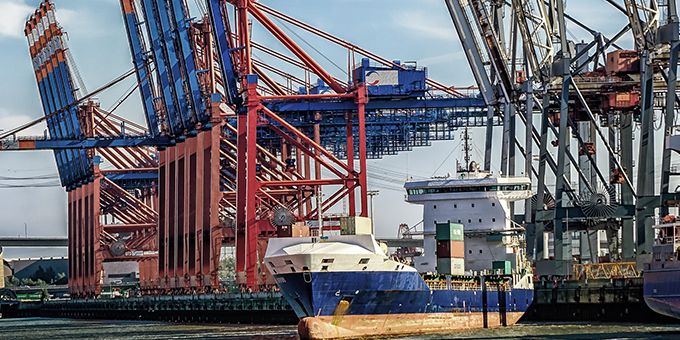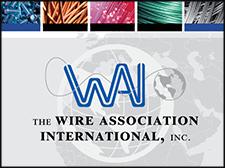The COVID-19 pandemic has exposed the fragility of long, complex supply chains. It has also shown how reliant many US and European companies are on the overseas supply of critical items, bringing to the fore a long-debated issue—are we ready to reshore?
 Reshoring or…rightshoring? - Why a successful reshoring strategy must focus on quality
Reshoring or…rightshoring? - Why a successful reshoring strategy must focus on quality

Harel Boren, CEO and co-founder | Inspekto
A recent survey by US publication Supply Chain Dive revealed that 64 per cent of interviewees think that reshoring will be one of the most likely consequences of the COVID-19 pandemic. The situation has highlighted the domino effect of disruptions in global supply chains, where one vulnerable node can impact the functionality of the whole chain.
As a consequence, trade publications have given ample space to what is actually a decade-old debate—should manufacturers seriously consider reshoring? While the answer is not straightforward, surveys such as Supply Chain Dive’s highlight two current trends.
One is the diversification of supply chains, where manufacturers seek to lessen their reliance on a single source by adding more companies, distributed across different geographical areas, to their list of approved suppliers.
The other is indirect reshoring, where manufacturers decide to increase their in-house capacity, instead of reshoring an entire section of their production.
This last trend is particularly interesting, not only because of its sudden surge in popularity, but because it allows manufacturers in Europe, Asia, or America to lessen their reliance on suppliers in any of the other regions, without cutting off ties completely with their offshore operations. However, to work successfully, indirect reshoring must go hand in hand with a focus on quality.
Spotlight on quality
Some of the phenomena we are witnessing in the current situation are just the exacerbation of processes that started years ago. Reshoring has happened to some extent over the last ten years, as rising labour costs in Asia, and particularly in China, pushed manufacturers to reconsider original offshoring policies.
Reshoring seems to have been greater in North America, with companies such as General Motors, Ford and Boeing having brought thousands of jobs back to the US in the last decade.
But labour cost is not the only factor pushing companies to reshore, whether directly or by adding in-house capabilities. The 2019 Lloyds Bank report Business in Britain: Manufacturing conducted for Reshoring UK, showed that the prime reason for reshoring, cited by 71 per cent of respondents, was to improve quality.
While labour costs certainly impact profits, the Total Cost of Defect (TCoD) is also an important metric to consider. This includes wasting time and material to produce defective products, refunds following a client’s complaint, possible lost business and reputational damage in the long run. If we consider all these factors, suddenly labour doesn’t seem so cheap, after all.
However, simply reshoring does not automatically guarantee an increase in quality. To reach this goal, manufacturers must have thorough quality assurance (QA) processes in place, to spot defects early on and avoid the manifold consequences of poor quality.
The problem with machine vision projects
When investing in a QA system, manufacturers hope to reduce the Total Cost of Defect while maximising quality. Alas, traditional machine vision solutions available on the market obstruct their efforts. Moreover, as reshoring becomes a high priority as one of the main consequences of the COVID-19 pandemic, the immediacy and costs associated with installing visual QA systems climb high in the priority list of many manufacturers too.
Firstly, machine vision projects cost anywhere between $20,000 to $200,000 or more. If the goal is to cut costs, this initial investment might undermine the whole reshoring project.
Secondly, traditional solutions frequently take months to design, develop, train and test. When reshoring, manufacturers hope to make up for vulnerable supply chains right away, not in several months’ time.
Lastly, machine vision projects are commonly made up of a myriad of components, chosen and assembled ad hoc by an external machine vision expert or a systems integrator. Manufacturers want to consolidate control of their production lines to improve quality, but end up relying on third parties for their QA solution, thus losing control of their production processes all over again. It’s a frustrating vicious circle.
Autonomous Machine Vision
To enable manufacturers to be fully in control of their quality inspection process, in 2018 Inspekto, a German-Israeli company, introduced the first Autonomous Machine Vision system, the INSPEKTO S70.
As opposed to traditional QA solutions, the INSPEKTO S70 is an off-the-shelf product that contains everything the industrial user needs to start inspection, in terms hardware as well as software in one single package. It is ready to install, out of the box, allowing users to skip the costly and lengthy customisation and integration process that characterises traditional solutions.
The installation process is designed to be extremely user-friendly, so that any user, regardless of their technical background, can complete it hours, rather than weeks or months, without having to rely on a vision systems integrator.
Moreover, it is priced at a fraction of traditional machine vision projects, which means that businesses of every size can now afford accurate QA, without having to resort to unreliable manual inspection because the costs of a machine vision project are too high.
While traditional machine vision solutions need to be trained to recognise every possible defect, the INSPEKTO S70 autonomously learns to recognise the characteristics of a good product. Once inspection begins, it will alert the user of any variation from the memorised gold standard. As a consequence, the INSPEKTO S70 can address products that it has never seen before, without the need for lengthy and complex training. This means that it starts delivering value to the plant right away, not after several months.
Thanks to the powerful capabilities of its three artificial intelligence engines working in tandem, the system can self-adapt to new environmental conditions, meaning that it will always take a clear image of the item being inspected, regardless of changes in lighting, without human intervention.
These characteristics naturally encourage what Inspekto calls Total QA, that is the presence of multiple QA stations to inspect items through the whole production process, not just at the end – another important component for reshoring efforts to be of successful. Over time, this allows manufacturers to see where defects happen more often, so that they can intervene appropriately to optimise the production line.
With a focus on quality, manufacturers can revive domestic production without having to rely solely on cheaper labour force to stay ahead of the competition. Instead, they can rely on technologies such as Autonomous Machine Vision to get their factories back up to speed, stronger and with better quality than ever before.
The content & opinions in this article are the author’s and do not necessarily represent the views of ManufacturingTomorrow
Comments (0)
This post does not have any comments. Be the first to leave a comment below.
Featured Product

